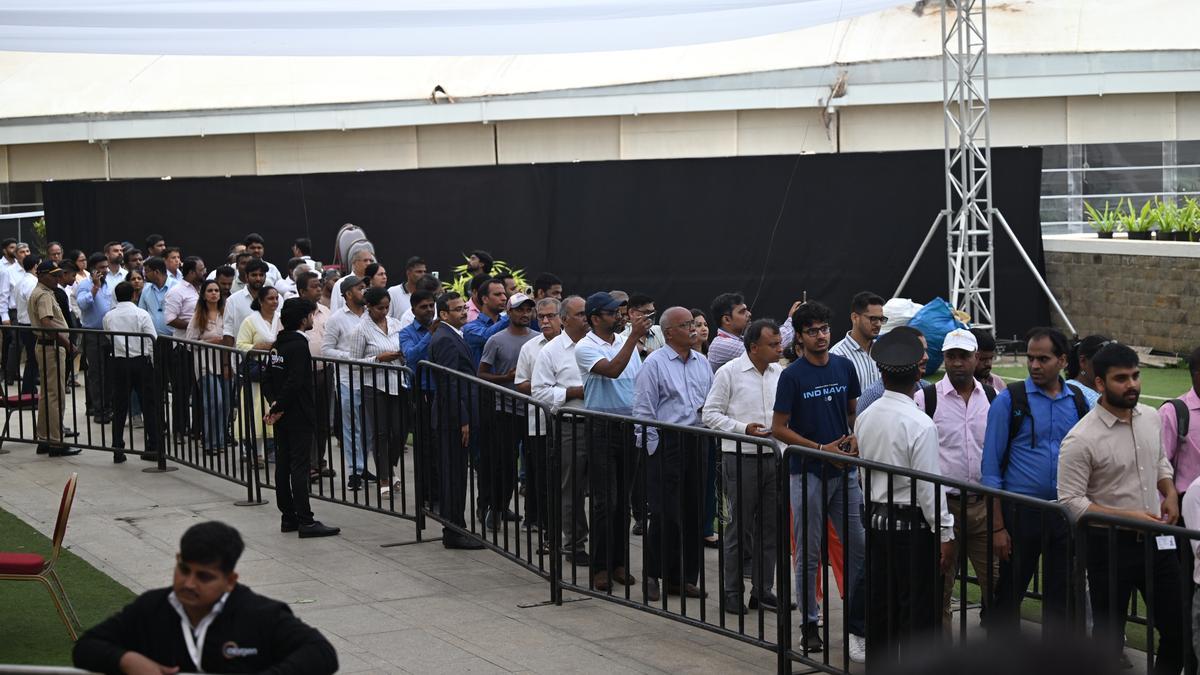
On October 10, the hearse carrying the legendary industrialist Ratan Tata made its solemn journey to the National Centre for the Performing Arts (NCPA) in Mumbai. This distinguished venue was chosen for people to pay their final respects, and it was a location imbued with deep cultural significance for Tata’s family and the many lives he touched. The connection between the revered Tata family and this cultural hub is rooted deeply in the legacy of the NCPA itself.
The NCPA, located at the vibrant edge of Marine Drive by the vast Arabian Sea, stands as a landmark in what was once one of Mumbai’s bustling business districts—Nariman Point. This area witnessed a metamorphosis when the Bandra Kurla Complex emerged as a new financial hub. However, it is within Nariman Point that the sprawling NCPA emerged as a beacon for the performing arts, owing its existence to two inspired visionaries: JRD Tata and Jamshed Bhabha. The latter, brother to the renowned nuclear physicist Homi Bhabha, dedicated six decades of his life to the Tata Group.
The NCPA owes much to the collaborative efforts of JRD Tata and Jamshed Bhabha, who shared a mutual aspiration to establish a world-class, comprehensive arts center in Mumbai. The fruit of their labor materialized in 1969, marking the creation of South Asia’s first multi-venue and multi-genre cultural center. This monumental achievement wasn’t an easy journey.
Jamshed Bhabha’s vision was initially met with a significant hurdle—securing land for the project. As NCPA chairman Khushroo N Suntook narrates with a light-hearted chuckle, Bhabha once approached Prime Minister Indira Gandhi for this endeavor, which led her to task the then Chief Minister of Maharashtra, Vasantrao Naik, to assist. In a remarkable display of ambition, the Chief Minister pointed to the sea, stating that this was the only land available. Unfazed, Bhabha and JRD Tata accepted the challenge, and the Tatas spent over eight years reclaiming this land from the sea.
Even before the final touches could be placed on their ambitious project, the indomitable spirit of Jamshed Bhabha led him to establish the NCPA’s presence on the floors of a high-rise named Akash Ganga built on lawyer Bhulabhai Desai’s erstwhile bungalow site. Despite the initial challenges, the project was realized, largely due to the tireless support and commitment of JRD Tata, as detailed by Suntook, who was privileged to be a colleague of Ratan Tata for many years and has held various notable positions within the Tata Group. Suntook’s own passion for music culminated in the formation of the Symphony Orchestra of India in 2006.
The inaugural theatre at the NCPA was aptly named the Tata Theatre. It marked a pioneering leap in theatre design in India with technical expertise from Tata Consulting Engineers.
. Features such as a revolving stage, spacious foyers, and outstanding acoustics were crafted under the guidance of internationally acclaimed architect Phillip Johnson and acoustic expert Cyril Harris. Before construction commenced, Jamshed Bhabha undertook the essential task of visiting numerous concert halls across the West to gather inspiration. The theatre has since played host to an impressive array of both national and international talents.
In celebration of Tata Iron and Steel Company’s platinum jubilee, the Tata Experimental Theatre was born. Conceived as a Black Box venue, it offers simple yet versatile performance capabilities, with black or grey walls and movable seating arrangements to foster closer interaction with the audience.
With a foresight for large-scale performances, NCPA inaugurated the Jamshed Bhabha Theatre in 1999. Designed for grand operas, musicals, and orchestras, the theatre seats 1,109 people and showcases a magnificent 100-year-old marble staircase, a donation from Sir Dinshaw Petit. Suntook recollects a major setback just two months prior to the theatre’s opening—a devastating fire severely damaged the structure. The resilient spirit of Jamshed Bhabha ensured that no blame was cast and reconstruction efforts progressed rapidly, culminating in the theatre being ready for its grand opening in under two years. Out of humility, Bhabha initially wished to name it the National Theatre, but friends and colleagues persuaded him to honor himself instead by naming it the Jamshed Bhabha Theatre.
Ratan Tata, along with his friend and acclaimed maestro Zubin Mehta, enjoyed a profound camaraderie, enriched by their shared love for music. Suntook reflects on their warm relationship, recalling how Ratan Tata regrettably missed Zubin Mehta’s recent performance due to ill health. Ratan Tata’s legacy was not only built on his astute business acumen but also on his profound appreciation for the arts, evidenced by his support and attendance of Western classical music concerts, enjoying works by luminaries such as Beethoven, Mozart, and Brahms.
From the beginning, when Jamshed Bhabha presented the concept of a cultural center to the Sir Dorabji Tata Trust, JRD Tata was a steadfast supporter. Despite initial skepticism from some trustees, Bhabha passionately advocated for the preservation of India’s immense cultural and spiritual heritage through music. The trust was ultimately convinced, making an endowment of 40 lakh rupees toward establishing the NCPA.
Ratan Tata carried this legacy forward with unwavering support, cultivating an environment of loyalty and respect. His final journey to the NCPA, a place that embodies this enduring connection between the Tatas and the arts, was a testament to his life, which inspired countless individuals. The throngs that gathered to offer their last respects reflected the indelible impact he left on the hearts of many.












